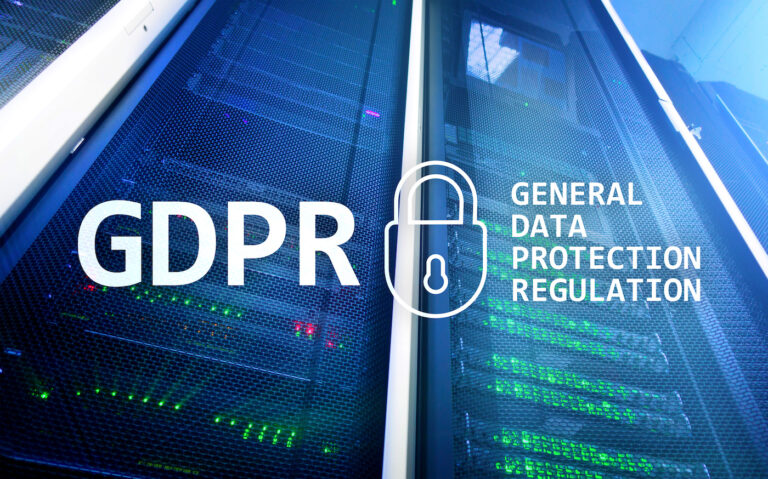By Andy Baillie, VP, UK and Ireland at Master Data Management (MDM) specialists, Semarchy

The introduction of GDPR in May 2018 has ensured better protection and use of data. However, six years on, compliance remains a significant hurdle for many companies, exacerbated by the complex, yet exciting, integration of AI.
The consequences of non-compliance are severe, as demonstrated by massive fines imposed on tech giants like Google, X (formerly Twitter), and Meta (formerly Facebook) for breaches of data protection laws. However, large tech corporations aren’t the only ones at risk; any business could face penalties for non-compliance with data privacy laws.
With an increasing amount of sensitive data and rising penalties for GDPR violations, data privacy compliance has become a top priority worldwide. In response, IT vendors are adapting their marketing approaches to highlight how their solutions can help organisations tackle these compliance challenges.
But how can companies differentiate between legitimate GDPR-compliance tools and those simply taking advantage of the hype? A robust, GDPR-compliant Master Data Management (MDM) system will provide the answer. Such a system acts as a centralised platform, allowing businesses to manage, update, delete, and control their data effectively – a crucial step in achieving data privacy compliance.
Business and IT leaders can address their GDPR compliance challenges through an MDM solution with these three approaches:
- Create unified customer data records
Disjointed customer data can cause serious GDPR compliance issues. Using MDM to merge disparate data into one comprehensive “golden record” creates a centralised repository that provides complete visibility and control. By consolidating data, MDM eliminates the blind spots caused by data siloes, enabling you to properly govern and safeguard personal information across your organisation.
GDPR requires data accuracy and minimisation, necessitating the deduplication of customer data for GDPR compliance. With its data quality enhancement and deduplication capabilities, MDM ensures customer data is accurate, appropriately formatted, unique, and minimised.
The result? No more concerns about compliance and the risk of fines due to poor data quality. However, deduplication is merely the beginning – there are many more issues to address under GDPR and additional advantages to obtain through MDM.
- Implement ongoing data governance
Focus on the essential governance controls of MDM, such as granular access permissions and data masking, which protect sensitive data and restrict its visibility. Comprehensive audit trails highlight how personal data is managed and protected throughout its lifecycle, demonstrating the accountability necessary for compliance.
Auditable records and strategic data control help businesses navigate the complexities of regulatory compliance. Additionally, master data management supports data retention policies tailored to legal and business needs, allowing for the timely purging of irrelevant data. Thus, MDM maintains compliance with data privacy laws while reducing data storage and risk exposure.
Many modern MDM solutions also integrate immediately with dedicated consent management platforms. This cohesive strategy streamlines your consent capture and data governance processes, facilitating efficient management of the entire consent lifecycle – from the point of initial data acquisition to its deletion upon request. By implementing continuous governance measures, you can keep an accurate, updated record of customer preferences and honour them consistently across all systems and processes.
- Establish a robust data foundation for AI
AI and data management must coexist harmoniously to maximise potential benefits. AI transforms businesses by delivering valuable insights, but its effectiveness relies on the quality of the underlying data. Conversely, strong data quality management practices enable organisations to leverage AI fully, maximising its capabilities to the greatest extent.
In essence, to fully harness the capabilities of AI, it’s essential first to establish a strong, meticulously governed data foundation that underpins both innovation and compliance. This involves:
- Using MDM to merge personal data into accurate, deduplicated “golden records” while following data minimisation principles.
- Establishing guidelines on the appropriate use of AI in data management contexts.
- Applying stringent data quality measures, using MDM’s governance tools like granular access controls, data masking, and audit trails to securely process and record sensitive information.
- Automatically erasing outdated personal data as defined by clear policies.
By fostering a GDPR-aligned data foundation, companies can confidently leverage game-changing, AI-driven analytics, using machine learning to generate insights free from non-compliance risks.
Unlock new opportunities
The interconnected relationship between data privacy compliance and MDM is indisputable. Yet, beyond merely meeting regulatory requirements, having clean, mastered, and deduplicated data – including customer information, products, and locations – paves the way for broader business opportunities.
Deeper insights into customer behaviour, transactions, and purchase history provide a dual benefit. They simplify data deletion requests and open up opportunities for improved customer engagement, marketing optimisation, and revenue growth.
Effective GDPR compliance ultimately rests on your ability to comprehensively track and govern personal data across your organisational processes. However, dispersed data across siloed systems and duplicate records prevent many businesses from achieving enterprise-wide visibility of their data processing activities. MDM provides the necessary foundation to efficiently locate, update, and protect customer data across all of a company’s operational aspects.

